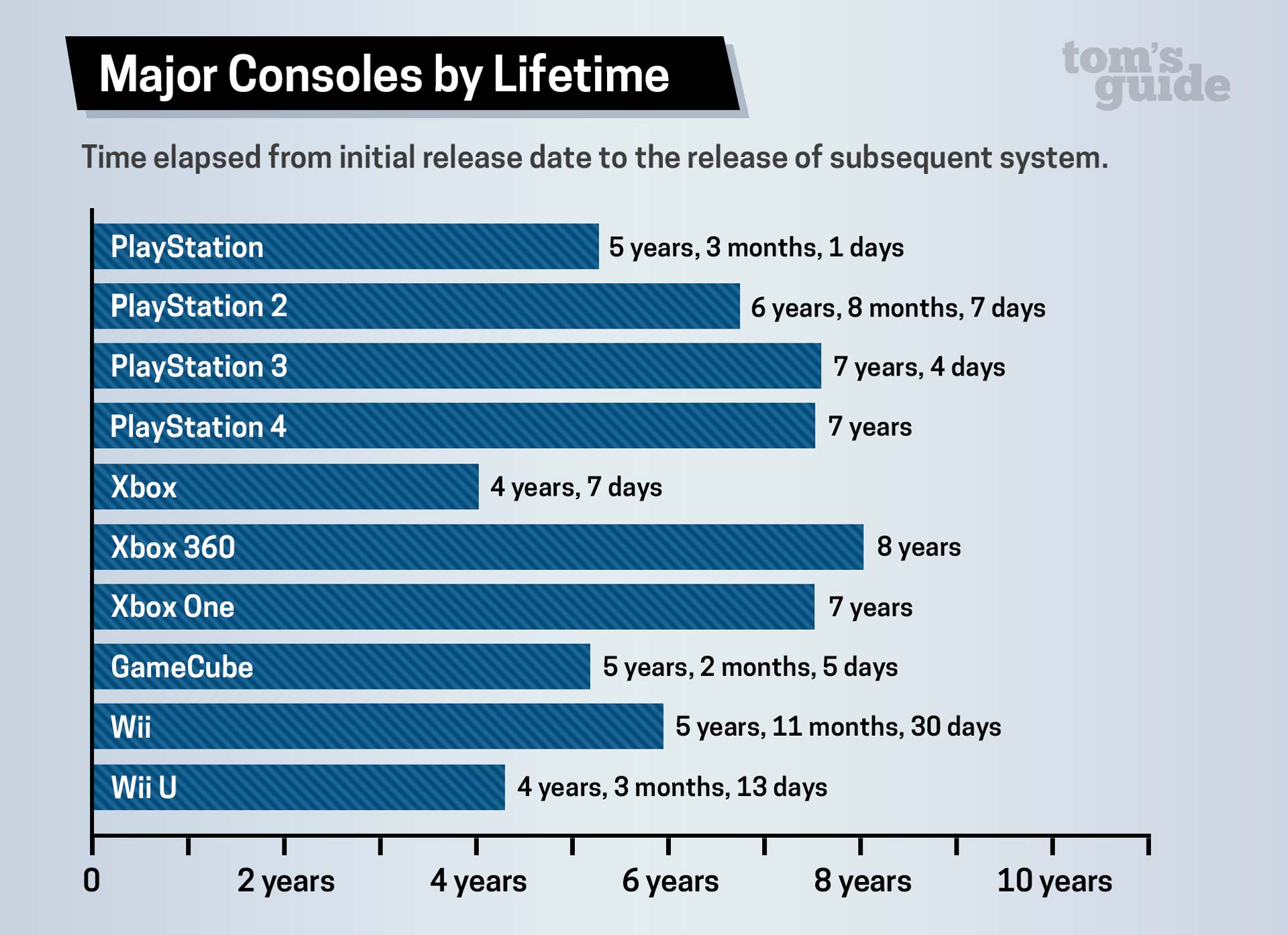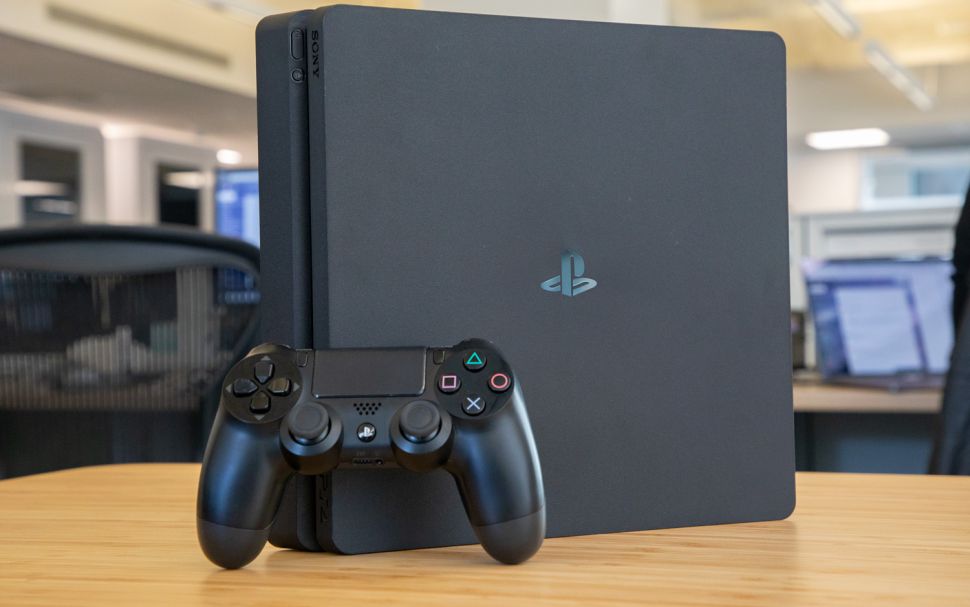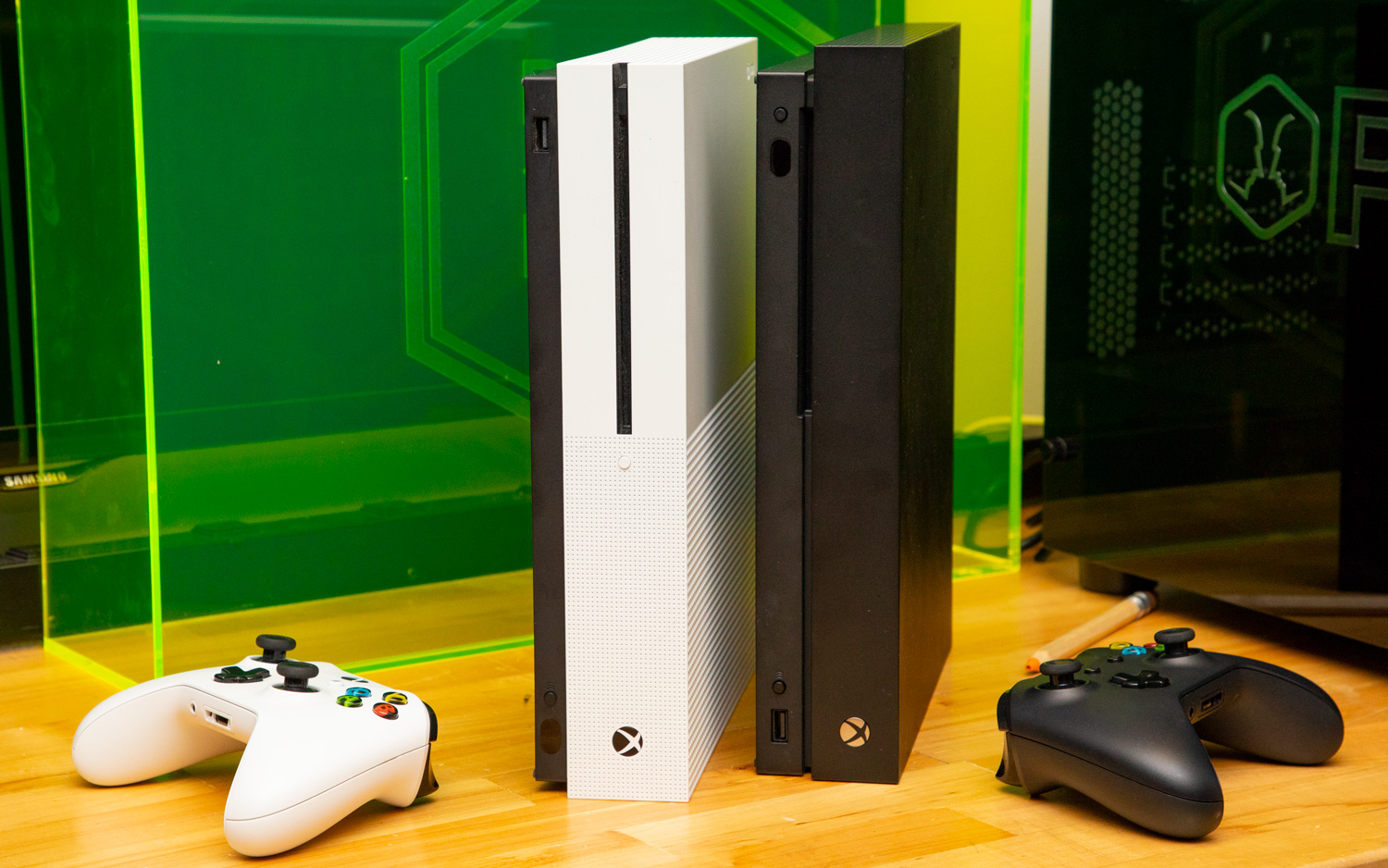PS5 and Xbox Series X lifecycles: How long will these new consoles last?
20 years of data to show potential PS5 and Xbox Series X lifecycles

The PS5 just got a big moment in the spotlight, at an event that highlighted key specs, as did the Xbox Series X. While both are expected to drop in the holiday season, we're already starting to wonder how long it will be before they're replaced by the next "latest and greatest" gaming console.
Naturally, Xbox chief Phil Spencer himself isn't making any promises. But speaking to the AIAS Game Maker’s Notebook podcast, he doesn't think that cloud gaming will kill the console, saying "I think I’m going to have a game console plugged into my television for the next decade-plus."
- PS5 release date, price, specs, games and more
- Xbox Series X release date, price, pre-order, controller and more
- Just in: Key PS5 features finally confirmed by GameStop
These console lifetimes — at least in our households — will likely increase thanks to backwards compatibility. If the PS5 and Xbox Series X have a deeper catalogues of games, we get more reasons to keep them around in the long-term. Microsoft's Smart Delivery feature is another win for gamers, as it means you can buy an Xbox game once and get enhanced versions of that same game on subsequent consoles for free.
While we wait for more details about the PS5 and Xbox Series X, we’ve flipped through the entire history of Sony and PlayStation's hardware releases. And we'll put the good news — for customers trying to save money, at least — up front: the lifespan of a console has grown with each generation (with only one exception).
Just to keep things consistent, we're looking at each console’s earliest release date, which often took place in Japan. Here’s how long every PlayStation and Xbox generation has lasted, and what it tells us about the future of the PS5 and Xbox Series X.

Sony PlayStation
Released - replaced: December 3, 1994 - March 4, 2000
Lifetime: 5 years, 3 months, 1 day
Get instant access to breaking news, the hottest reviews, great deals and helpful tips.
Units sold: more than 102 million
The first of its name, and the first console to move over 100 million units, the original Sony PlayStation delivered solid gameplay and allowed a number of franchises to flourish. Shortly after, the PS2 came out, Sony released a smaller, whiter model, dubbed the PS one.
The PlayStation started at $299 in the U.S., and Sony earned applause for being comparatively affordable when compared to the $399 Sega Saturn. It would later get marked down to $199. Over time, Sony changed the ports on the back of the PlayStation, first gutting the RCA ports and then removing the wide (and old-looking) Parallel I/O port.
Sony PlayStation 2
Released - replaced: March 4, 2000 - November 11, 2006
Lifetime: 6 years, 8 months, 7 days
Units sold: Approx. 155 million
Introduced less than 6 years into the life of the OG PlayStation, the PS2 debuted in September 1999 at the Tokyo Game show. In the years leading to its release, word leaked that Sony was going to deliver backward compatibility with PS1 games and controllers.
Sony made the PS2 more appealing by adding a DVD player, as well as including internet connectivity (though browsing a web page in its browser was flawed at best). It was the first PlayStation to offer online gaming. The more-svelte PlayStation 2 Slim debuted two-thirds into the console's life, in 2004.
Sony PlayStation 3
Released - replaced: November 11, 2006 - November 15, 2013
Lifetime: 7 years, 4 days excluding the end date
Units sold: More than 87 million
Sony released the PS3 three times, slimming down the shape of the machine with each update. Its inaugural release, in 2006, followed a wait of about a year and a half from E3 2005, where it was first announced. Sony gets retroactive points for correctly choosing the right media format, as the PlayStation 3 got support for Blu-ray discs (which are still sold today), while the Xbox 360 got HD-DVD (which failed, and fast).
The PS3's 7-year life cycle was merely 4 months ahead of the PS2's 6-year, 8-month window and suffered a bit as developers saw it as hard to develop and program for. Its unique cell processor may have been mighty, but it led to backward-compatibility issues for PS4 owners. When Sony announced that the PS5 would support PS4 games, PS3 owners breathed a sigh of relief.
Sony PlayStation 4

Released - replaced: November 15, 2013 - Holiday 2020
Lifetime: Approximately 7 years
Units sold: More than 106 million
Estimating the PS5's release as "holiday season 2020," and looking at how often "holiday season" translates to November, it's safe to see that the PS4's successor will bow out about 7 years after Sony released the winner of this current generation of the console wars.
The PS4 dominated the last 7 years because Sony smartly ditched the Cell microarchitecture and focused on delivering quality exclusive games, with highlights including Horizon Zero Dawn, Uncharted 4: A Thief’s End, God of War, Gran Turismo Sport and Marvel’s Spider-Man. The PlayStation 4 would get two siblings, the smaller PlayStation 4 Slim and the 4K UHD-supporting PlayStation Pro.
Microsoft Xbox
Released - replaced: November 15, 2001 - November 22, 2005
Lifetime: 4 years, 7 days excluding the end date.
Units sold: More than 24 million
A giant X with a green dot in the middle, the original Xbox was Microsoft's big brash jump into the world of gaming hardware. And it didn't just stick a toe into gaming culture. Microsoft's official Xbox unveiling was done by no lesser pop culture icons than Dwayne "The Rock" Johnson and Bill Gates.
Selling 1.5 million units in its first month and a half, the Xbox thrived off of the must-play title of its launch year: Halo: Combat Evolved. In its second year, Microsoft added Xbox Live, an online gaming platform that made the Xbox the console to get to play against your friends who lived out of town.
Microsoft Xbox 360
Released - replaced: November 22, 2005 - November 22, 2013
Lifetime: 8 years excluding the end date.
Units sold: Approx. 80 million
Reportedly in development since about half-way into the Xbox's life, the Xbox 360 looks like both a hit and a miss in hindsight. While PS3 had its exclusives, Microsoft was not without wins, including Gears of War, and its Xbox Live success.
While it sold 80 million units worldwide, it arguably could have sold many more — and outpaced the 87 million mark posted by the PS3. Standing in the way of said financial success was the 360's Red Ring of Death failure issue, that basically rendered the console unusable.
Microsoft Xbox One

Released - replaced: November 22, 2013 - Holiday 2020
Lifetime: Approx. 7 years
Units sold: not reported
While the Xbox One will last as long as Sony's PS4, it's inarguably the loser of this generation. Sony's PS4 sales eclipsed 106 million units, while Microsoft simply stopped reporting that detail. Multiple additional releases, the digital-only Xbox One S and the 4K Xbox One X, didn't help things.
As to why it lost? Well, much like how Arby's has the meats, Sony had the games. Despite strong exclusives like Forza Horizon4 and Gears of War 5, the Xbox One didn’t quite have anything on the level of God of War or Spider-Man. Microsoft's response? Buying up all the studios it can (including recent acquisitions Double Fine and Ninja Theory), to hopefully gain exclusives that will help the Xbox Series X thrive.
So how long will the PS5 and Xbox Series X last?
Based on the above math, I expect the PS5 and Xbox Series X to last through 2027 or maybe 2028. As we move to streaming-only gaming, with offerings like Google Stadia (which already feels dead) and Project xCloud, the console still has firm footing, and it appears as if each of these machines is made to go the distance as much as they're meant to make an immediate impact.

Henry was a managing editor at Tom’s Guide covering streaming media, laptops and all things Apple, reviewing devices and services for the past seven years. Prior to joining Tom's Guide, he reviewed software and hardware for TechRadar Pro, and interviewed artists for Patek Philippe International Magazine. He's also covered the wild world of professional wrestling for Cageside Seats, interviewing athletes and other industry veterans.

